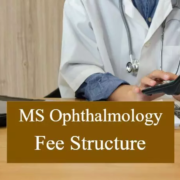Role of Selenium Nanoparticles in Immunotherapy, Tumor Treatment: Study Finds
Selenium nanoparticles (SeNPs) could offer great therapeutic potential. By modifying the surface properties of these nanoparticles, scientists are unlocking new possibilities for using selenium in immunotherapy, inflammation reduction, and tumor treatment. A recent review by researchers from Jinan University published in Nano Biomedicine and Engineering highlights the growing role of Selenium nanoparticles in immunotherapy.
Selenium nanoparticles can be synthesized using both chemical and biological methods. Chemical processes often reduce selenium compounds into nanoparticles, while biological methods use microorganisms to transform selenium. These flexible techniques allow researchers to create Selenium nanoparticles with specific properties tailored to different medical needs.
Selenium nanoparticles can activate the immune system, helping immune cells like natural killer (NK) cells and macrophages target and destroy tumor cells. In addition, these nanoparticles are being tested in combination with traditional treatments like chemotherapy and radiation, showing enhanced anticancer effects and better immune response when used together.
Selenium nanoparticles also have strong anti-inflammatory effects. They can reduce inflammation by regulating key proteins in the body, offering potential treatments for inflammatory diseases like colitis. In animal studies, Selenium nanoparticles reduced inflammatory markers and restored immune balance in the intestines. Beyond that, Selenium nanoparticles are also being explored as vaccine adjuvants. These nanoparticles can improve immune cell activation, helping vaccines work more effectively and potentially boosting cancer vaccine efficacy. While Selenium nanoparticles show great promise, there are still hurdles to overcome. Though studies in animals have been promising, more research is needed to ensure these nanoparticles are safe and effective in humans.
Reference: Yang, Y., Liu, Y., Yang, Q., & Liu, T. (2024). The Application of Selenium Nanoparticles in Immunotherapy. Nano Biomedicine & Engineering, 16(3).
Research Uncovers Role of Critical Cellular Mechanism in Progression of Alzheimer’s Disease
Researchers with the Advanced Science Research Center at the CUNY Graduate Center (CUNY ASRC) have unveiled a critical mechanism that links cellular stress in the brain to the progression of Alzheimer’s disease (AD). The study, published in the journal Neuron, highlights microglia, the brain’s primary immune cells, as central players in both the protective and harmful responses associated with the disease.
Microglia, often dubbed the brain’s first responders, are now recognized as a significant causal cell type in Alzheimer’s pathology. However, these cells play a double-edged role: some protect brain health, while others worsen neurodegeneration.
The research team discovered that activation of this stress pathway, known as the integrated stress response (ISR), prompts microglia to produce and release toxic lipids. These lipids damage neurons and oligodendrocyte progenitor cells — two cell types essential for brain function and most impacted in Alzheimer’s disease. Blocking this stress response or the lipid synthesis pathway reversed symptoms of Alzheimer’s disease in preclinical models.
Key Findings
Dark Microglia and Alzheimer’s Disease: Using electron microscopy, the researchers identified an accumulation of “dark microglia,” a subset of microglia associated with cellular stress and neurodegeneration, in postmortem brain tissues from Alzheimer’s patients. These cells were present at twice the levels seen in healthy-aged individuals.
Toxic Lipid Secretion: The ISR pathway in microglia was shown to drive the synthesis and release of harmful lipids that contribute to synapse loss, a hallmark of Alzheimer’s disease.
Therapeutic Potential: In mouse models, inhibiting ISR activation or lipid synthesis prevented synapse loss and accumulation of neurodegenerative tau proteins, offering a promising pathway for therapeutic intervention.
This research underscores the potential of developing drugs that target specific microglial populations or their stress-induced mechanisms.
Reference: https://asrc.gc.cuny.edu/headlines/2024/12/new-research-identifies-key-cellular-mechanism-driving-alzheimers-disease/
American Academy of Neurology Highlights 12 Factors to Protect Your Brain
12 factors to protect your brain are outlined in an Emerging Issues in Neurology article developed by the American Academy of Neurology and published in the online issue of Neurology®, the medical journal of the American Academy of Neurology.
“Neurologists are the experts in brain health, with the training and insight needed to help you keep your brain in top shape throughout life,” said American Academy of Neurology President Carlayne E. Jackson, M.D., FAAN. “The American Academy of Neurology’s Brain Health Initiative is leading the way, improving brain health for all by providing neurologists with important information on preventive neurology. This article can serve as a great conversation starter for you and your physician about ways to keep your brain healthy.”
The article outlines 12 factors that influence a person’s brain health at all stages of life. It includes questions for each of the factors that you can discuss with your physician.
Sleep: Are you able to get sufficient sleep to feel rested?
Affect, mood and mental health: Do you have concerns about your mood, anxiety, or stress?
Food, diet and supplements: Do you have concerns about getting enough or healthy enough food, or have any questions about supplements or vitamins?
Exercise: Do you find ways to fit physical exercise into your life?
Supportive social interactions: Do you have regular contact with close friends or family, and do you have enough support from people?
Trauma avoidance: Do you wear seatbelts and helmets, and use car seats for children?
Blood pressure: Have you had problems with high blood pressure at home or at doctor visits, or do you have any concerns about blood pressure treatment or getting a blood pressure cuff at home?
Risks, genetic and metabolic factors: Do you have trouble controlling blood sugar or cholesterol? Is there a neurological disease that runs in your family?
Affordability and adherence: Do you have any trouble with the cost of your medicines?
Infection: Are you up to date on vaccines, and do you have enough information about those vaccines?
Negative exposures: Do you smoke, drink more than one to two drinks per day, or use nonprescription drugs? Do you drink well water, or live in an area with known air or water pollution?
Social and structural determinants of health: Do you have concerns about keeping housing, having transportation, having access to care and medical insurance, or being physically or emotionally safe from harm?
By discussing these factors with your neurologist or primary care physician, they can then provide advice, medical care and resources to help you take steps to improve your brain health.
Reference: Selwa, L. M., Banwell, B. L., Choe, M., McCullough, L. D., Merchant, S., Ovbiagele, B., … & Day, G. S. (2025). The Neurologist’s Role in Promoting Brain Health: Emerging Issues in Neurology. Neurology, 104(1), e210226.
















